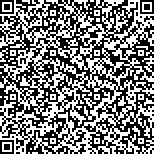| 引用本文: | 王平,周忠发,殷超.基于全极化SAR与多光谱的喀斯特山区农村林地提取[J].中国农业资源与区划,2017,38(7):41~50 |
| |
|
| |
|
|
| 本文已被:浏览 3450次 下载 871次 |

码上扫一扫! |
|
|
| 基于全极化SAR与多光谱的喀斯特山区农村林地提取 |
|
王平1,2, 周忠发1,2, 殷超1,2
|
|
1.贵州师范大学喀斯特研究院,贵阳 550001;2.国家喀斯特石漠化防治工程技术研究中心,贵州贵阳 550001
|
|
| 摘要: |
| [目的]为加快推动贵州省“互联网+”林业建设,打破贵州喀斯特高原山区遥感监测瓶颈,选取了空间分辨率8m的Radarsat 2全极化SAR数据与空间分辨率6m的SPOT 6多光谱影像作为数据源,探究微波与光学遥感结合在喀斯特山区农村地区的林地提取技术。[方法]首先采用ENVI SARscape与NEST软件对SAR图像预处理。将Radarsat 2全极化数据与SPOT 6标准假彩色影像进行HSV融合。计算融合图像的平均梯度、信息熵、标准差与均值,评价出最优融合效果的极化方式。基于K均值(K-means)与最大期望(EM聚类)聚类算法分割图像,选择合适的算法,基于聚类分割的阈值进行面向对象的林地分类。最后,基于像素的混淆矩阵精度评价,结合贵州省林业厅调查数据、野外样方和航拍图,建立参考样本评价分类结果。[结果](1)融合之后,目视解译出林地边缘明显但较粗糙; 对于在林地中小面积建筑物、农田中的较分散的林地小图斑能够识别,但边缘粗糙; 有林地和灌木林地在色调上区分明显; 在融合后的明度图中的灌木林地有明度较大的像元,此类像元为石旮旯地。(2)通过定量分析,融合之后的影像较SAR和光学数据信息量大。同极化平均梯度大于交叉极化,HH极化方式下各指标最大。图像EM聚类分割比K-means聚类更加细化。EM聚类图像的特征区分明显; (3)研究分类出了有林地、灌木林地和其他林地。面向对象的林地分类总体分类精度达到85.71%。[结论]研究将微波与光学遥感结合,为喀斯特山区中农村地区的林地提取提供新思路,与传统的林地监测相比,数据获取快捷,提高工作效率,精度准确。有助于通过遥感的手段解决地块破碎区域的林地提取问题,为提高多源遥感技术在喀斯特农村地区中的林地智能监测的能力提供借鉴。 |
| 关键词: 全极化 Radarsat-2 SPOT6 林地提取 图像融合 聚类分析 分类 |
| DOI:10.7621/cjarrp.1005-9121.20170707 |
| 分类号: |
| 基金项目:国家自然科学基金地区项目“喀斯特石漠化地区生态资产与区域贫困耦合机制研究”(41661088); 贵州省高层次创新型人才培养计划——“百”层次人才(黔科合平台人才[2016]5674); 贵州省科技计划“基于北斗卫星的山地高效农业产业园区智能管理系统开发与应用”(黔科合GY字[2015]3001); 国家遥感中心贵州分部平台建设(黔科合计Z字[2012]4003)(黔科合计Z字[2013]4003) |
|
| RURAL WOODLAND EXTRACTION BASED ON FULL POLARIZATION SAR AND MULTISPECTRAL IN KARST MOUNTAIN AREAS |
|
Wang Ping1,2, Zhou Zhongfa1,2, Yin Chao1,2
|
|
1.Guizhou Normal University,Guiyang 550001,China;2.National Remote Sensing Center of China-Guizhou Division /State Key Environment Technology Research Center for Karst Rocky Desertification Rehabilitation of China,Guiyang, Guizhou 550001,China
|
| Abstract: |
| To speed up the construction of "Internet +" forestry Guizhou province and break the bottleneck on remote sensing monitoring in the Guizhou Karst plateau area, combing microwave and optical remote sensing methods, this paper explored the extracting technology of forest land in the rural areas of the Karst mountainous area based on the data of Radarsat-2 and the SPOT6 with the spatial resolution 8m and 6m. SARscape ENVI and NEST software were used to preprocess the SAR image. And then, it calculated the average gradient, the information entropy, the standard deviation and the mean value of the fused image, and evaluate the optimal fusion of polarization mode based on K-means and maximum expected (EM clustering) clustering algorithm. Finally, it established classification results of the reference sample combined with the Guizhou Provincial Forestry Department survey data and field sampling data. The results showed that: (1) the visual interpretation of the woodland edge was obvious but rough. Woodland and shrub land were obviously different because the brightness of shrub forest had a big pixel.(2) By quantitative analysis, image data volume after fusion was even greater than SAR and optical data. The average gradient of the same polarization was larger than the cross polarization, and the HH polarization mode was the biggest. EM clustering segmentation was more detailed than K-means clustering. (3) The overall classification accuracy was 85.71%. The combination of microwave and optical remote sensing was a new way to extract forest land in the rural areas of Karst mountainous area, which was faster and more accuracy compared with the traditional forest land monitoring. It can solve the problem of forest land extraction by remote sensing, and improve the ability of intelligent monitoring with multi source remote sensing technology in the rural areas of Karst. |
| Key words: full polarization Radarsat-2 SPOT6 forest land extraction image fusion clustering analysis classification |
|

